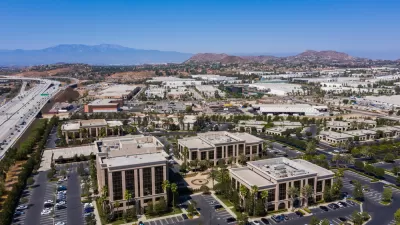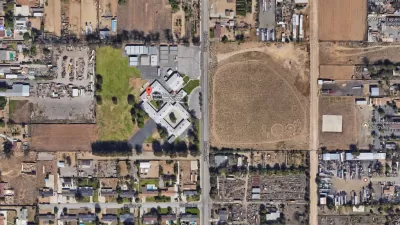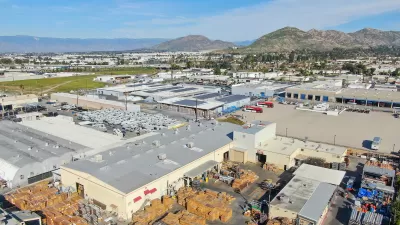Dr. Joe Lyou, CEO of the Coalition for Clean Air, walks through the legal necessity of South Coast AQMD's proposed Indirect Source Rule, which aims to accelerate the transition to zero-emission technologies and fleet electrification.

Last week, environmental and community groups reached a $47 million settlement with the developer of a proposed mega-warehouse in Moreno Valley to invest up to $50 million in solutions to electrify the facility. With the exponential rise of e-commerce in the last decade, the resulting increase in diesel truck traffic serving the booming logistics industry is both a growing sector of the economy and a significant contributor to air pollution in the region. To address the disproportionate health impacts of the industry on neighboring communities, on Friday, May 7, the South Coast Air Quality Management District (SCAQMD) will vote on an Indirect Source Rule to require and incentivize the clean-up of warehouses in metropolitan Los Angeles.
To frame this important vote, TPR sat down with Dr. Joe Lyou, CEO of the Coalition for Clean Air, who walks readers through the legal necessity of the first-of-its-kind rule that aims to make better neighbors of industry giants, like Amazon, and accelerate the transition to zero-emission technologies and fleet electrification.
“Southcoast AQMD must adopt all feasible measures in order to achieve the state standards and this [Indirect Source Review Rule] is clearly a feasible measure within its authority. [Note: All feasible measures requirement is in the California Health and Safety Code §40462(a).]"—Joe Lyou
To read the full interview, visit The Planning Report.
FULL STORY: Coalition for Clean Air’s Joe Lyou on SCAQMD’s Indirect Source Rule Vote May 7th

Study: Maui’s Plan to Convert Vacation Rentals to Long-Term Housing Could Cause Nearly $1 Billion Economic Loss
The plan would reduce visitor accommodation by 25,% resulting in 1,900 jobs lost.

North Texas Transit Leaders Tout Benefits of TOD for Growing Region
At a summit focused on transit-oriented development, policymakers discussed how North Texas’ expanded light rail system can serve as a tool for economic growth.

Why Should We Subsidize Public Transportation?
Many public transit agencies face financial stress due to rising costs, declining fare revenue, and declining subsidies. Transit advocates must provide a strong business case for increasing public transit funding.

How to Make US Trains Faster
Changes to boarding platforms and a switch to electric trains could improve U.S. passenger rail service without the added cost of high-speed rail.

Columbia’s Revitalized ‘Loop’ Is a Hub for Local Entrepreneurs
A focus on small businesses is helping a commercial corridor in Columbia, Missouri thrive.

Invasive Insect Threatens Minnesota’s Ash Forests
The Emerald Ash Borer is a rapidly spreading invasive pest threatening Minnesota’s ash trees, and homeowners are encouraged to plant diverse replacement species, avoid moving ash firewood, and monitor for signs of infestation.
Urban Design for Planners 1: Software Tools
This six-course series explores essential urban design concepts using open source software and equips planners with the tools they need to participate fully in the urban design process.
Planning for Universal Design
Learn the tools for implementing Universal Design in planning regulations.
Ascent Environmental
Borough of Carlisle
Institute for Housing and Urban Development Studies (IHS)
City of Grandview
Harvard GSD Executive Education
Toledo-Lucas County Plan Commissions
Salt Lake City
NYU Wagner Graduate School of Public Service





























